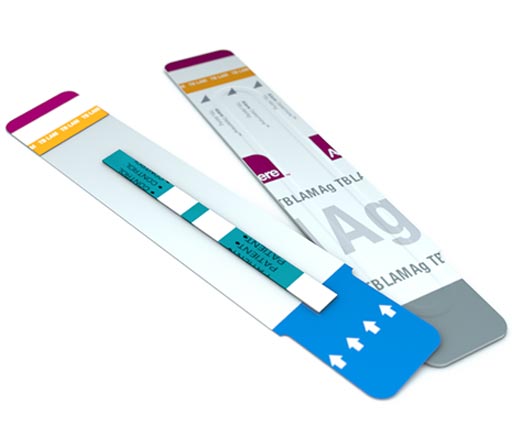Early Urine Collection Improves Assay for HIV-TB
By LabMedica International staff writers
Posted on 25 May 2017
There is an urgent need for new, accurate, and rapid non-sputum-based tuberculosis (TB) diagnostics that have high sensitivity in patients with human immunodeficiency virus (HIV/TB) co-infection with advanced immunosuppression.Posted on 25 May 2017
Early morning urine (EMU) is accepted as a useful method for improving the concentrations of a number of antigens and analytes found in human urine. The strategy has been shown to improve the yield of urine culture for TB diagnosis.

Image: The Alere Determine TB LAM Ag point-of-care test screens for active TB in HIV positive patients, providing results in just minutes (Photo courtesy of Alere).
Scientists at the University of Cape Town prospectively recruited HIV-infected adults, all over the age of 18 years, between June 2012 and February 2014 from four hospitals in South Africa. The reference standard for TB was single sputum sample positive liquid TB culture and/or Xpert MTB/RIF assay. Paired samples of EMU and random urine were collected from each patient.
The lateral flow lipoarabinomannan assay (LF-LAM) was done on random urine samples at the bedside and additionally on matched fresh bedside EMU samples the following day. All samples were tested using the Alere Determine-TB LAM Ag lateral flow assay. LF-LAM was graded using the pre-January 2014, with grade 1 and 2 manufacturer-designated cut-off-points (the latter designated grade 1 after January 2014).
There were 123 HIV-infected patients who had commenced anti-TB treatment and provided matched random and EMU samples. There were 33% (41/123) who had definite TB and 67% (82/123) had probable TB. Amongst those with definite TB LF-LAM sensitivity using the grade 2 cut-off-point, increased from 12% (5/43) to 39% (16/41) with random versus EMU, respectively. Similarly, amongst probable TB, LF-LAM sensitivity increased from 10% (8/83) to 24% (20/82). LF-LAM specificity was not determined.
The authors concluded that the study highlights the diagnostic implications of the timing of sample collection with EMU testing significantly improving LF-LAM sensitivity in hospitalized TB/HIV co-infected patients. Factors known to affect LAM concentration, such as CD4 cell count, age and culture/Xpert MTB/RIF status were not associated with an increased LF-LAM grade. The data presented have implications for clinical practice. The study was published on May 12, 2017, in the journal BMC Infectious Diseases.














